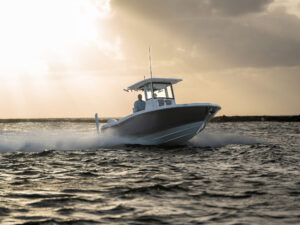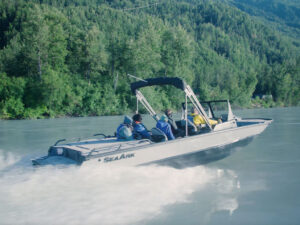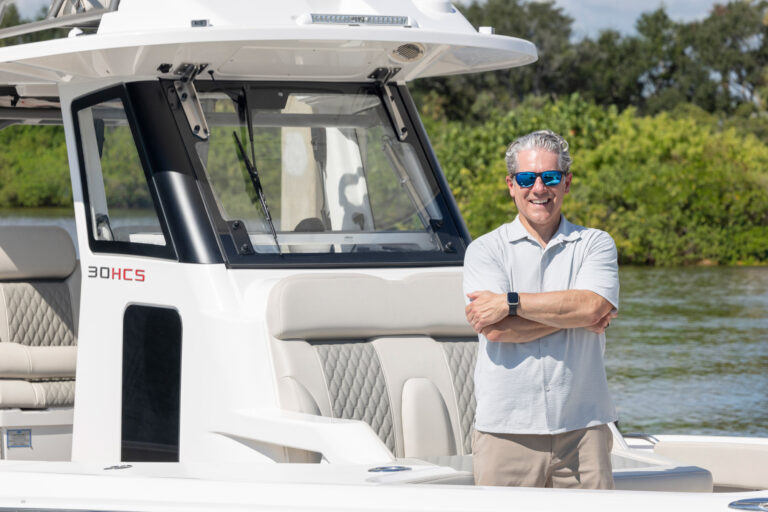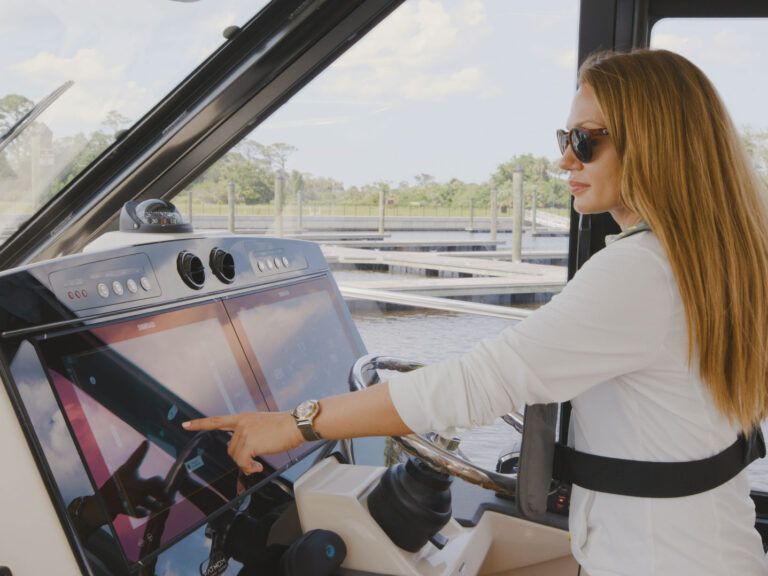A float plan is a document, whether digital, written on paper, or even verbal, that you leave with a responsible individual that details your boat trip’s destination, purpose, and timeframe. If you do not return and/or call in at the predetermined time, the party to whom you entrusted the float plan can alert authorities. This article will go into greater detail about what a float plan is and why boaters should be using a float plan every time they venture away from land.
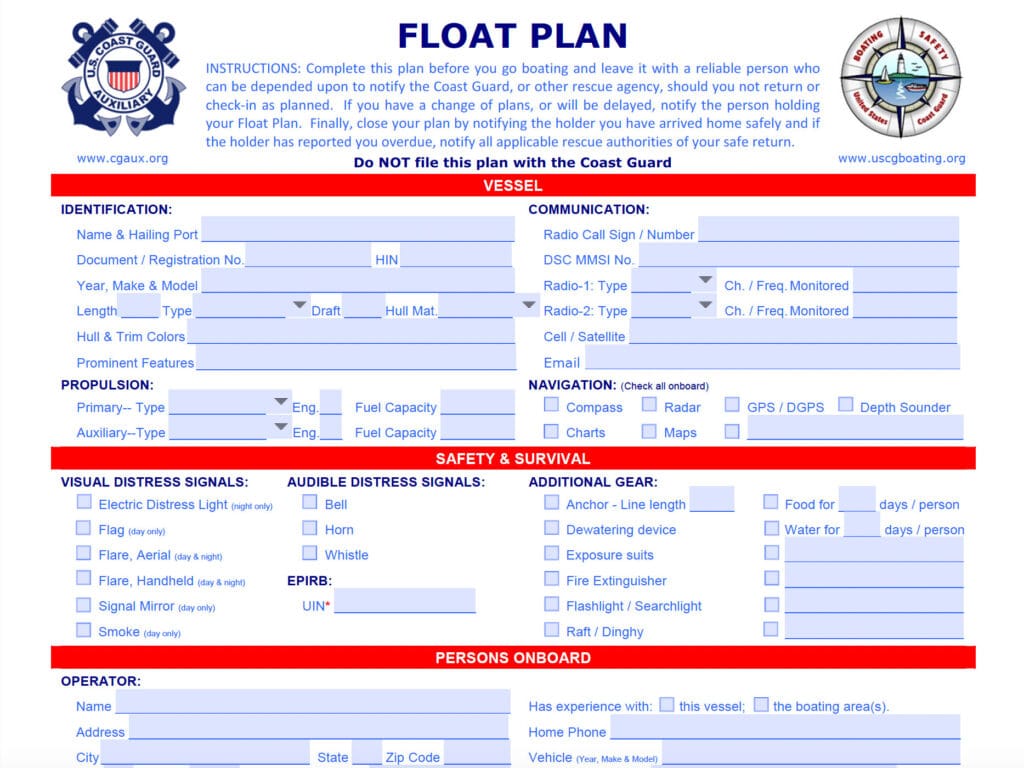
Article at a Glance
- Float plans are age-old and proven in emergency situations.
- Filing a float plan can be as easy as telling a trusted friend or family member about your boating plans.
- Float plans should include important information like vessel type, name and color, passenger names, trip purpose and itinerary, and more.
What is a Float Plan?
A float plan is the information that you leave with a responsible party that details your destination, purpose, and timing. It also includes a description of your boat and details the number of people aboard. The purpose of your trip–fishing, whale watching, cruising to such-and-such marina, etc.- should also be included. If you do not return and/or call in at the predetermined time, the party to whom you entrusted the float plan can alert authorities.
What Should Be Included in a Float Plan?
- Vessel Information: Include the make, model, length, color and type of propulsion. Also list distinguishing features, such as outriggers, a tower, or a towed dinghy.
- Trip Itinerary: Note your trip’s start and end locations, as well as locations you are likely to stop at or pass close to along the way.
- Trip Timing: List the start and end times to reach the destination. Also, list estimated times of passing/ visiting prominent other locations. Projected course lines (from a GPS or manually plotted) can be helpful.
- Trip Purpose: If fishing, say so, as anglers might tend to veer off course towards a reef or fishing ground. Cruisers may often ‘ sidetrack’ to view some unique landmark, etc. This type of info can prove valuable to rescue agencies.
- Crew/Passenger Information: List the names, ages and number of people who will be aboard your boat for the trip. Also include phone numbers for each. Include yourself!
- Emergency Contacts: This can be a spouse or family.You should also include boating, sailing or fishing friends who may have in-depth knowledge of your on-water habits.
- Equipment and Supplies: List relevant safety equipment as required by law, in addition to non-required items such as EPIRBs, a life raft (describe it in detail tool kits, extra clothing and food rations, etc.
3 Reasons to Create a Float Plan
Suppose your boat is disabled or sinks, or you have a medical emergency such as a heart attack or a bad fall, without time to make a radio SOS call. How long will it take for someone to notice you have not returned? Would they know where you were headed so that they could advise potential rescuers where to look? A float plan is created and filed for just these reasons.
- Safety and Emergency Preparedness: Even knowledgeable, well-equipped boaters may not have time to make an SOS call or activate a safety beacon should an emergency occur.
- Search and Rescue Operations: The detailed info in a float plan will get rescuers to you much more quickly than without it. Remember: Hours, minutes, and even seconds often count in emergencies.
- Peace of Mind: Both you, your loved ones, and the loved ones of any guests aboard can achieve greater peace of mind and security when you file a float plan.
– NEVER MIX ALCOHOL AND BOATING –
Safety Tip Provided by the U.S. Coast Guard
Alcohol is the leading contributing factor in fatal boating accidents, and in many states a citation for boating under the influence goes on your driving record.
Who Should Create a Float Plan?
A float plan should be created by the person responsible for and in charge of the trip, usually the boat’s owner. A float plan is a good idea for any trip, but it is especially advised for longer trips or trips on larger bodies of water. Your trip does not need to be out of sight of land to warrant a float plan, as tragedy can occur in a second.
What kind of boaters prepare float plans?
- Boaters who want to know rescuers will begin searching if they do not arrive on time should file a float plan,
- Boaters who make trips of long duration, even if within sight of land, should file a float plan.
- Boaters who make trips on large lakes or bays and the open sea should file a float plan.
- Any boater should, at the least, verbally inform a responsible party about any boating outing.
When and How to Create a Float Plan
A float plan should be created before heading on a trip and filed with the responsible party, who can be family, friend, marina owner, harbormaster, etc. A float plan can be created on paper by using the information in this article. Alternatively, many boating safety agencies offer downloadable blank float plans. Pro tip: fill in the info that doesn’t change, such as your vessel details and phone numbers, and save to your computer (or print out a stack) so you only need to fill in trip and passenger details. Finally, the U.S. Coast Guard and other public and private entities offer apps that allow you to electronically create and share a float plan.
When to Create a Float Plan
A float plan should always be created in advance of your boat trip. This provides you time to ensure the person or organization you are charging with this responsibility gets it (and accepts it). Many boaters visit the same destinations again and again and may have pre-filled float plans for these trips on which they simply change the dates, times, and the number and names of crew members. In still other cases, a trip may be of indistinct timing, destination, or both, and it may be good to discuss any nuance with the responsible party.
How to Create a Float Plan
Creating a float plan is easy. You can manually write down a description of your boat, making sure to include its size, color, name, power type, and any distinguishing features (like a tower). List where you will be departing from and note the time you expect to return. Be sure to include your contact information. Also, note the number of people you will have aboard, their names, and their contact information. Just an old-fashioned note, really.
Of course, you can do this on a computer and print it out; use a pre-made template like this one from the U.S. Coast Guard Auxiliary: floatplancentral.cgaux.org/download/USCGFloatPlan.pdf
Yet another option is to use the mobile apps provided by the U.S. Coast Guard, Mercury Marine and others, that let you create a float plan and share it electronically.
– LOWER YOUR RATES –
Safety Tip Provided by the U.S. Coast Guard
Taking a boating safety course won’t just make you a better skipper. It could also help you save big on insurance.
What to Do with a Float Plan
A float plan is “filed” – that is given – to a responsible person, party or entity. It may be a friend or relative. It may be a marina owner. It may be an official entity like law enforcement or a rescue agency such as the Coast Guard. In selecting who to file the float plan with, consideration should be given to those who will understand the great responsibility and who know how to act on it by notifying authorities if you don’t arrive according to plan or check in by phone, radio or other means that your plans changed en route. It is critical that you report to the responsible party as well. Both must take the float plan seriously.
Closing Remarks & FAQs:
There may be some embarrassment associated with creating float plans. After all, the chances of getting into a boating emergency are quite low. But, if one does get into an emergency, the risks to life are high. We should never be embarrassed about concern for the lives of our friends and family aboard our boat.
In closing, note that many electronic apps now make it easy to create and share a float plan. Check out the U.S. Coast Guard App, Mercury Marine’s Vessel View App, and the Navionics App, just to name a few.
Are float plans formal documents?
No.
Do you have to file float plans with authorities or the U.S. Coast Guard?
No. Filing a float plan is a voluntary action.
How does a float plan enhance boating safety?
By ensuring a responsible party alerts authorities if you are overdue without word on a boat trip.
Can a float plan aid in faster response during emergencies?
Yes, it can, by narrowing down the search area to a specific route and destination.
Is it necessary to create a float plan for short boating trips?
If the water is rough or the weather is foul a float plan makes sense even for short trips.
Should solo boaters always create a float plan?
Absolutely, yes. Especially, since if a solo boater gets injured they will not have a companion aboard to help them.
Are there online tools available for creating float plans?
Yes, there are many online float plan tools. On this page you can download a blank float plan in pdf format from the US Coast Guard.
Should a boater inform someone when they deviate from the planned route in the float plan?
Yes. Boaters can use phone, text, marine radio, or even the messaging function of rescue beacons to communicate a change in itinerary back to the part with whom the float plan was filed.



